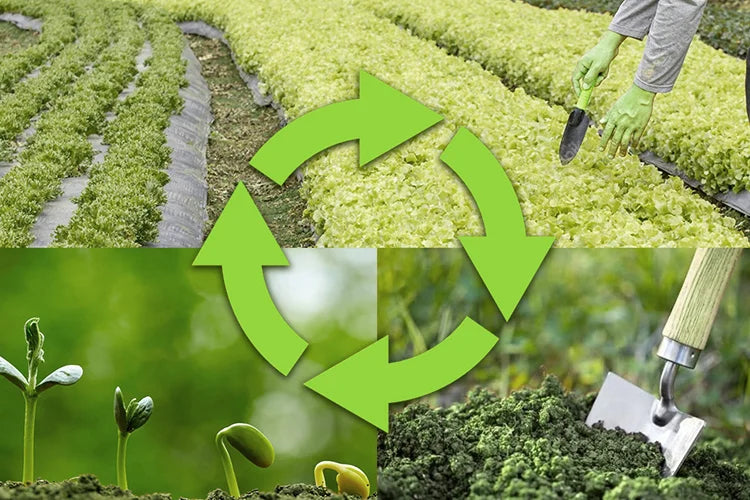Crop Rotation:
Crop rotation is a fundamental practice in agriculture that offers a range of benefits for both the soil and the crops grown in it.
Different crops use different nutrients from the soil. If you plant the same crop year after year, it will eventually deplete the soil of the nutrients it needs to thrive. This can lead to stunted growth, lower yields, and even crop failure.
Monoculture (planting the same crop repeatedly) creates a perfect environment for pests and diseases that target that specific crop.
Continuous monoculture can lead to a decline in soil organic matter, which is essential for good soil health.

Benefits of Crop rotation:
- Improves soil health: Different crops have different nutrient requirements. By planting a variety of crops, farmers can help to ensure that the soil retains a healthy balance of nutrients. For example, legumes (such as beans and peas) are known for their nitrogen-fixing properties, which means they can add nitrogen to the soil. This can be beneficial for subsequent crops that require a lot of nitrogen, such as corn.
- Reduces pest and disease problems: Certain pests and diseases tend to target specific crops. By rotating crops, farmers can disrupt the life cycles of these pests and diseases, making it more difficult for them to establish themselves in the soil.
- Improves water use efficiency: Crop rotation can help to improve the soil's water-holding capacity, which can help crops to better withstand drought conditions.
- Prevents nutrient depletion: Different crops have different nutrient requirements. Planting the same crop repeatedly in the same field can deplete the soil of the nutrients that particular crop needs. Crop rotation helps to avoid this by ensuring that different crops are using different nutrients each year.
Best crop that helps in balancing of soil nutrition:
Legumes: Legumes such as beans, peas, and alfalfa are nitrogen-fixing crops. This means that they have a symbiotic relationship with bacteria in their root nodules that can take nitrogen from the air and fix it into the soil. This nitrogen can then be used by other crops in the rotation.
Crop rotation is a complex practice, and there are many different factors to consider when planning a rotation. These factors include the type of crops to be planted, the soil type, the climate, and the farmer's goals. However, the benefits of crop rotation are well documented, and it is an essential practice for sustainable agriculture.




